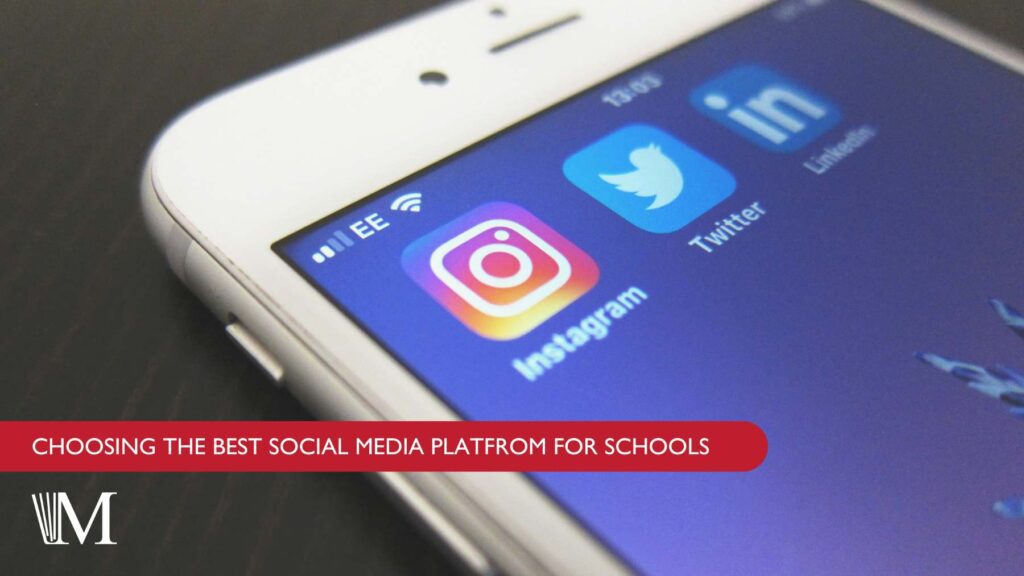
Social media has become an essential tool for schools to engage with their community, showcase achievements, and impress prospective families. However, with so many platforms available, it can be challenging to decide which ones to use. Should your school be on Facebook, Instagram, LinkedIn, X (formerly Twitter), or all of the above? Let’s dive into each platform’s unique features and capabilities to help you make an informed decision about the best social media platforms for schools.
Facebook: The Community Hub

Facebook remains a powerhouse for community engagement, making it an excellent platform for schools. With its extensive user base, schools can reach a broad audience, including parents, students, alumni, and local community members. Facebook’s features like Events, Groups, and Pages are perfect for sharing school news, upcoming events, and fostering a sense of community.
Pros:
- Broad audience reach
- Versatile content formats (text, images, videos, live streams)
- Effective for event promotion and community building
Cons:
- Organic reach has declined; may require paid promotions
- Moderation needed for comments and messages
Instagram: The Visual Storyteller

Instagram is the go-to platform for visually-driven content. Schools can use Instagram to share photos and videos of school events, classroom activities, and student achievements. Features like Stories, Reels, and IGTV offer creative ways to engage followers with short, dynamic content.
Pros:
- Highly visual and engaging
- Great for showcasing school culture and events
- Popular among younger audiences (students and prospective students)
Cons:
- Requires a steady stream of high-quality visuals
- Limited to mobile use for content creation
LinkedIn: The Professional Network

LinkedIn is ideal for schools looking to connect with alumni, recruit staff, and share professional achievements. It’s a platform where schools can highlight academic excellence, staff accomplishments, and collaborate with educational professionals. LinkedIn Groups can also facilitate discussions on educational topics and trends.
Pros:
- Professional network for recruitment and alumni engagement
- Ideal for sharing academic and professional content
- Opportunities for thought leadership and collaboration
Cons:
- Smaller audience compared to other platforms
- Less engaging for current students and parents
X (formerly Twitter): The Real-Time Communicator

X (formerly Twitter) is excellent for real-time updates and quick communications. Schools can use it to share news, updates, and important announcements. The platform’s hashtag feature can help in organizing campaigns and trending topics, making it easier to follow conversations around school events.
Pros:
- Real-time communication
- Effective for quick updates and announcements
- Hashtags enhance discoverability and engagement
Cons:
- Character limit restricts detailed posts
- Fast-paced nature may require frequent posting
TikTok: The Trendsetter

TikTok is a rapidly growing platform known for its short, engaging video content. Schools can use TikTok to showcase daily life, events, and creative projects in a fun and relatable way. The platform’s trends and challenges can be leveraged to increase visibility and engagement among a younger audience.
Pros:
- Highly engaging short-form video content
- Popular among younger audiences
- Opportunities to participate in trends and challenges
Cons:
- Requires frequent content creation to stay relevant
- Can be time-consuming to create high-quality videos
YouTube: The Video Library

YouTube is perfect for sharing long-form video content such as lectures, school events, and promotional videos. Schools can create a dedicated channel to host videos, making it a valuable resource for prospective families, students, and staff. It’s also a great platform for live streaming events.
Pros:
- Ideal for long-form video content
- Can host a wide variety of video types (lectures, events, promotions)
- Useful for live streaming and creating a video archive
Cons:
- Requires more time and resources to produce high-quality videos
- Competitive platform where visibility can be challenging
How to Choose the Best Social Media Platforms for Your School
Choosing the best social media platforms for your school requires careful consideration of several factors. Here are some key points to help you decide:
- Audience:
- Who are you trying to reach? Parents, students, staff, alumni, or the local community?
- Different platforms attract different demographics. Facebook and LinkedIn may reach parents and alumni, while Instagram and X are popular among students and younger audiences.
- Content Type:
- What type of content will you be sharing? Photos, videos, text updates, professional articles?
- Instagram is perfect for visual content, while LinkedIn suits professional and academic updates.
- Engagement Level:
- How frequently can you post and engage with your audience?
- Some platforms, like X, require more frequent updates, whereas others, like LinkedIn, can thrive with less frequent, high-quality posts.
- Resources:
- Do you have the resources (time, staff, budget) to manage multiple platforms?
- Consider the manpower needed for content creation, posting, and engagement.
- Goals:
- What are your main goals? Community engagement, student recruitment, staff recruitment, or showcasing achievements?
- Align your platform choice with your primary objectives. For example, use LinkedIn for recruitment and Facebook for community engagement.
Final Thoughts on Choosing the Best Social Media Platform
Navigating the social media maze doesn’t have to be daunting. By understanding the strengths and weaknesses of each platform, you can strategically choose the best social media platforms for your school. Remember to consider your audience, content type, engagement level, resources, and goals to make the most informed decision. With the right strategy, your school can create a vibrant online presence that supports your community and showcases your school’s achievements.


